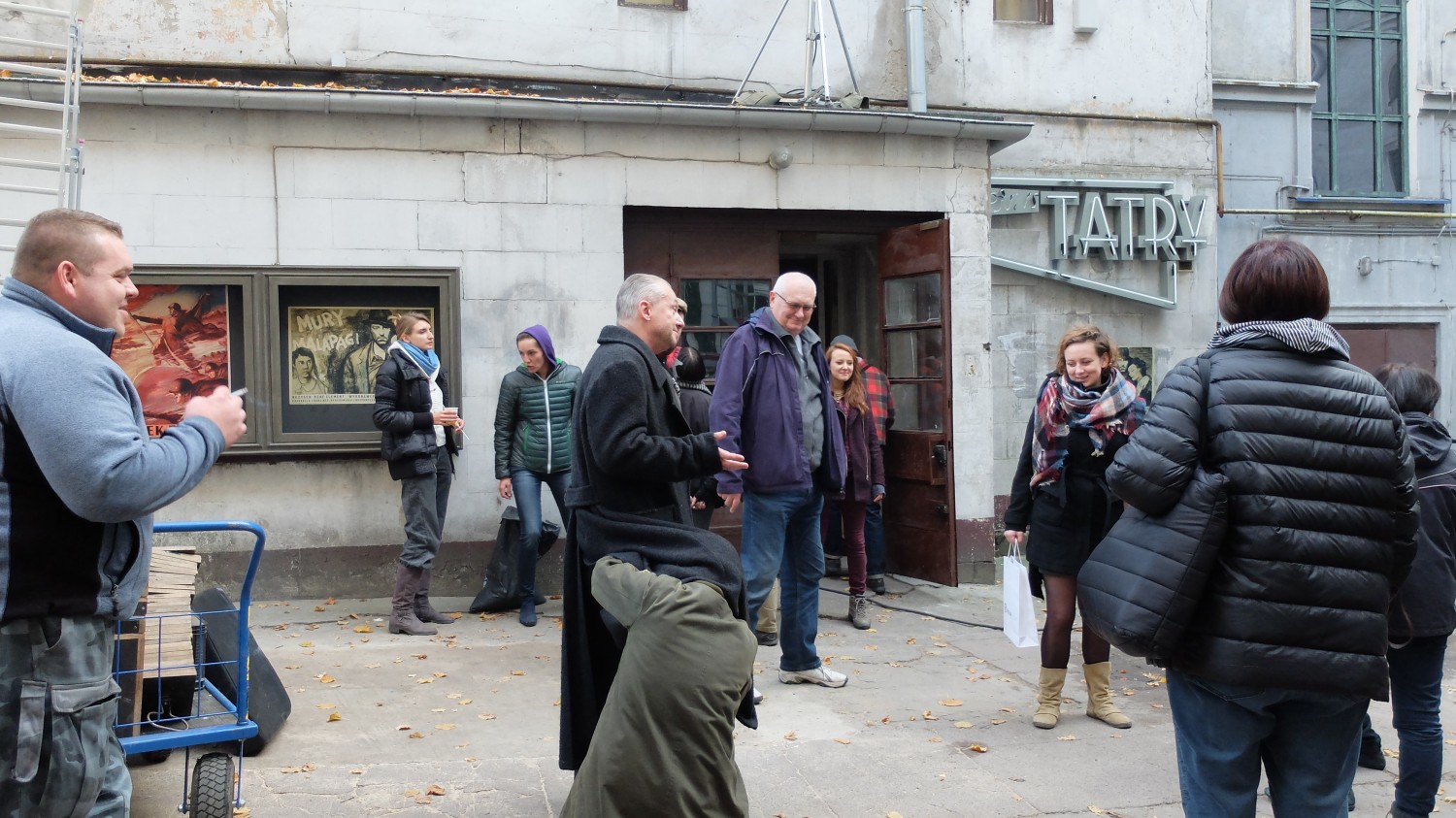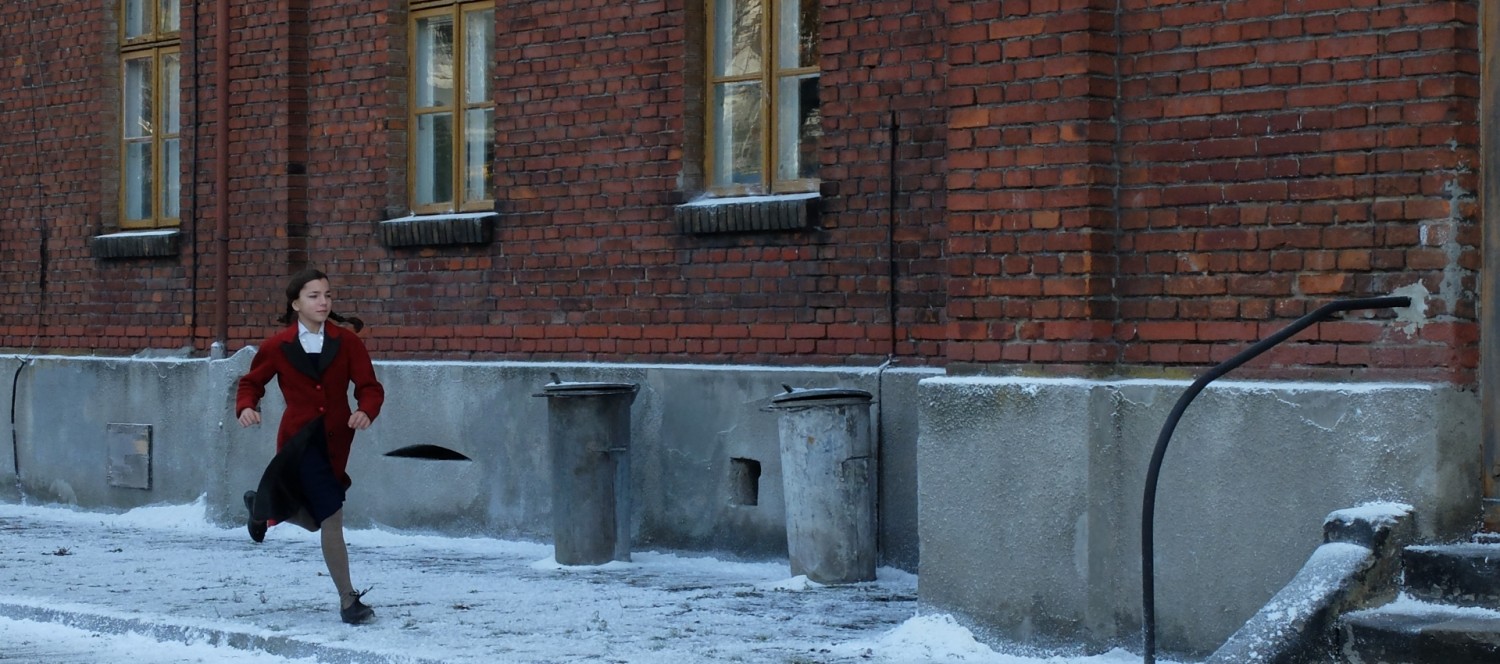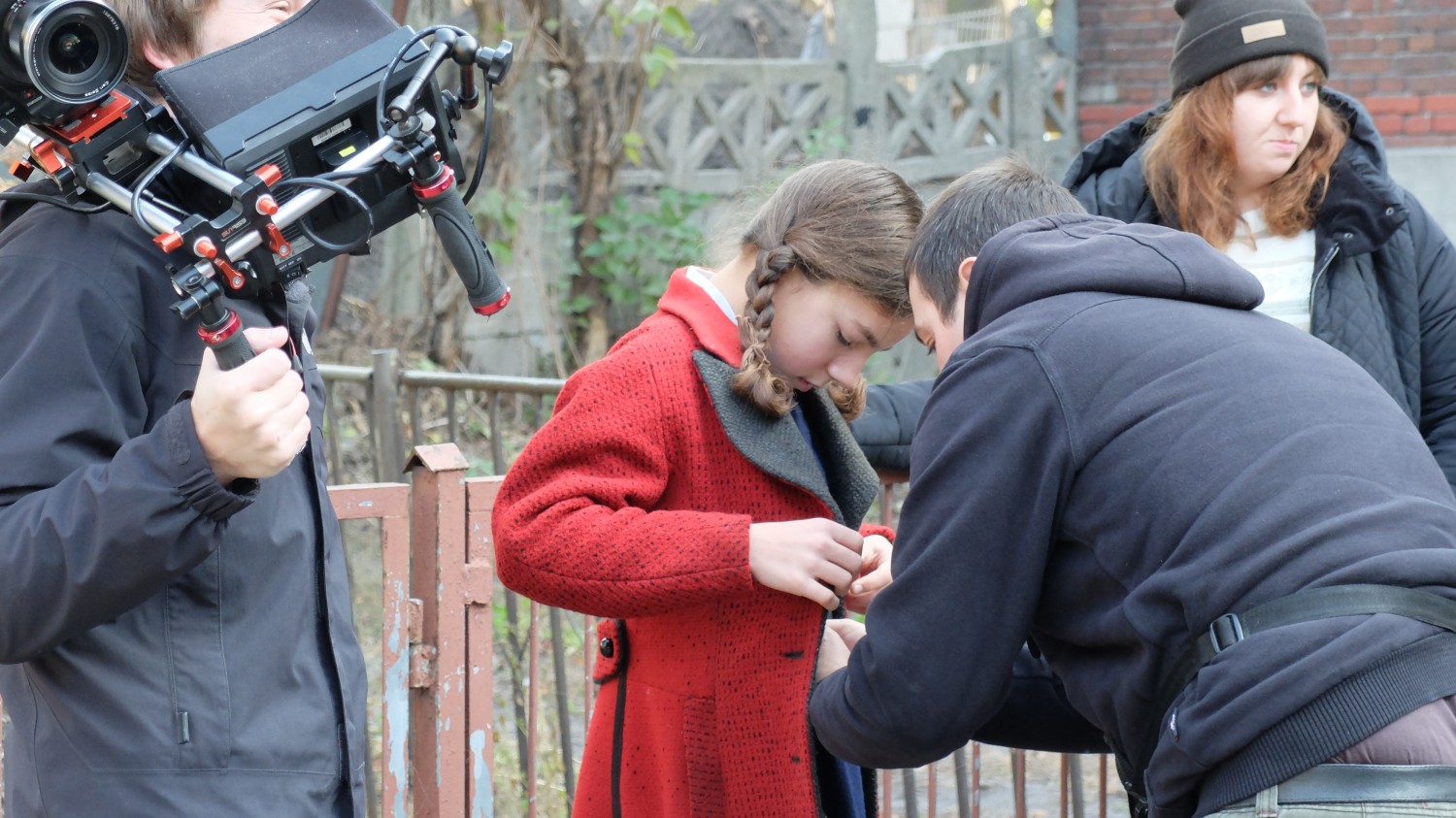"Afterimage"

in "Afterimage" by Andrzej Wajda
fot. Anna Włoch / Akson Studio
The idea for a film about the great Polish painter Władysław Strzemiński emerged in the mind of an excellent Polish director, Andrzej Wajda, a long time ago. Master Wajda studied art at the Academy of Fine Arts in Kraków, but before graduating he transferred to Łódź Film School and became the greatest and the most important Polish director.
"Afterimage" is the 40th and last feature film by Andrzej Wajda, who died on 9th October 2016 at the age of 90. The residents of Łódź found out about the Master's plans back in 2014 during a press conference, when the director, together with President Hanna Zdanowska, announced that he wanted to make a film about Strzemiński. From the very start it was clear that it would be filmed in Łódź, so a meeting with the city authorities, soliciting their support, was natural. Finally, due to the advanced age of the director it was decided that the indoor scenes would be filmed on a built set and all outdoor filming was to take place in Łódź.

fot. Wenancjusz Szuster / Łódź Film Commission
Work on the project began in 2015. The first stage mostly involved preparing documentation on Strzemiński and Łódź from that period. The stage design division collected accurate information on the appearance of buildings, streets, interiors, everyday objects, etc. Support from the Łódź Film Commission involved making contacts available and facilitating the flow of information between the "scenography" of the film and the Museum of Arts and Academy of Fine Arts. We discussed a number of issues and attended many meetings with the representatives of the Museum of Arts and the Academy of Fine Arts. Another stage of works was assistance in finding buildings that could appear in the film, along with preparing and coordinating new documentation. Due to excellent knowledge of the city, our assistance at this stage was active and essential. Locations for 13 scenes were selected in Łódź, including (which had not been planned earlier) two interiors: a small room in a building of YMCA Polska located on ul. Moniuszki which hosted an exhibition of paintings by Władysław Strzemiński's students and which was demolished by UB officers, as well as the space of the Tatry Cinema which appeared in the film as... the Tatry Cinema.
Filming on the streets in the city centre, both at night and during the day, was connected with major obstacles for the residents. The streets had to be closed for traffic, cleaned of modern elements: traffic lights, road signs, lampposts and even dogs. The scenes contain historic vehicles including trams, which caused the need to close the tracks and organise detours for public transport vehicles. At this stage our support included coordinating film production with the Roads and Transportation Office, Municipal Transport Company, Police, Municipal Police and other municipal services engaged in the filming process. The assistance also involved contacting residents and informing them of possible difficulties in parking cars or getting to their flats. Mostly, we had to contact entrepreneurs (generally traders) who have their shops on the ground levels of tenement houses and negotiate their consent for repainting the façades and hiding signs, shop windows, etc.

fot. Wenancjusz Szuster / Łódź Film Commission
Wajda's virtuosity is seen in his attention to detail, in such a way that every little item in the film enhanced the realism of the scene. Most of the film takes place in winter, yet the film was shot in October. Thus, we had to create a winter aura. The streets were filled with special paper powder imitating snow. On ul. Moniuszko, in front of the YMCA building, we had to "help" the tree and remove leaves on its lower branches to the height of the film frame. Apart from that we had to remove fencing in front of the renovated building facing it in order to place a camera there. One of the most onerous works took place at the junction of ul. Próchnika and Żeromskiego, i.e. the location of the tenement house which was the home of Strzemiński in the film. A large banner with an image of Josef Stalin was hauled onto the building. During the filming of those scenes film makers had to be particularly careful. The film ended with a scene in the Tatry Cinema of the 1950s, filmed in... the Tatry Cinema. Władysław Strzemiński probably took his daughter Nika to that very cinema, as we see in the film. It is just one element enhancing the realism of "Afterimage".
"EC1 Łódź – City of Culture", the frame institution for the Łódź Film Commission, supported the collection of funds from the Łódź Film Fund, becoming its co-producer. So let's keep our fingers crossed.
Wenancjusz Szuster / Łódź Film Commission
Locations of "Afterimage" in Łódź:

fot. Wenancjusz Szuster / Łódź Film Commission
- Moniuszki Street, the YMCA Poland building, outdoor location and interiors, the place where Strzemiński's students exhibited their works (demolished by communist Secret Service's officers).
- Kilińskiego Street (on the corner of Włókiennicza Street), the butcher's shop.
- Włókiennicza Street (on the corner of Kilińskiego Street), the paint shop.
- Włókiennicza Street (on the corner of Kilińskiego Street, facing the paint shop), shop window of the clothes shop, built decoration.
- Włókiennicza Street, the yard from Wschodnia Street, the yard and gate of Strzemiński's house and balcony in one of the scenes.
- Włókiennicza Street, the parade of May 1st.
- Próchnika Street (on the corner of Żeromskiego Street), outdoor location, the Strzemińskis' tenement house, onto which a large banner with the image of Joseph Stalin is being hauled.
- Gdańska Street (on the corner of Więckowskiego Street), outdoor location, the Museum of Art, Strzemiński and Nika go there to deposit paintings to safeguard them against destruction.
- Wólczańska Street (on the corner of Zielona Street), the Higher School of Arts, Strzemiński leaves the school with his students after his lecture is cancelled.
- 17th Roosevelta Street, outdoor location, the headquarters of Polish Stage Artists' Association.
- Tymienieckiego Street, outdoor location, Nika runs to the hospital to visit her mother.
- The Tatry Cinema, outdoor location and interiors, Strzemiński and Nika in the cinema and in front of the building.
- Wi-Ma, outdoor location, seamstresses leave the factory, Strzemiński falls down.

